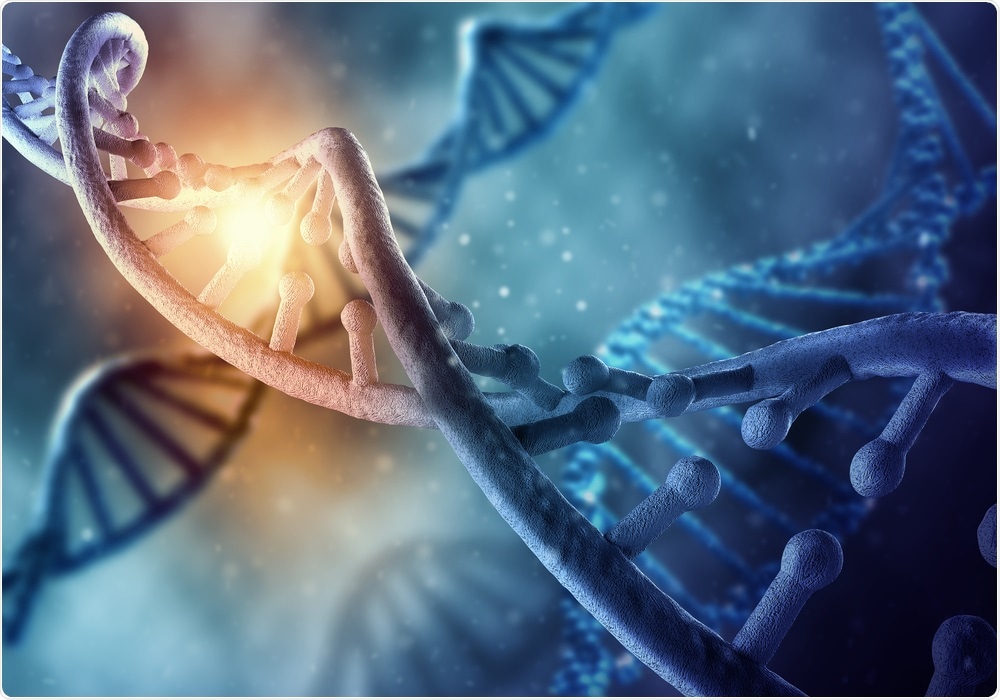If the genome is considered the recipe for life, then base pairs represent the individual ingredients. DNA is made up of these chemical structures, and every living thing on the planet has just four of them. The particular configurations of these four base pairings —A, T, C, and G—define humans who and what they are.

DNA. Image Credit: ESB Professional/Shutterstock.com
So it came as a huge surprise when scientists from Scripps Research announced in 2014 that they could insert two new, unnatural base pairs (dubbed X and Y for short) into the genetic code of living bacteria in laboratory settings. It was as though two never-before-seen components were thrown into the mix, theoretically increasing the range of dishes a cell can prepare.
The researchers instantly saw the potential uses: With better control and selection, they may be able to utilize cells as small kitchens to cook up novel vaccines and medicines. But just because there are more letters in a genetic blueprint does not necessarily mean that the cell can read them, or learn on what to do with them, or that any of it works in cells of organisms that are more complex than bacteria.
A team headed by academics from the University of California San Diego’s Skaggs School of Pharmacy and Pharmaceutical Sciences helped solve these challenges in a study published in the Nature Chemical Biology journal.
The researchers discovered that yeast cell machinery flawlessly “reads” the unnatural X and Y components, in the same way it would A, C, T, and G, and converts them into RNA, which may then be translated into proteins, which are the basis for almost every aspect of the cell.
Unlike bacteria, yeast is a eukaryote, which means it belongs to the same multicellular class of life as plants, fungi, and animals. It must be noted that these synthetic cells cannot live without the specific liquid nourishment given in the lab.
Now we can see exactly how eukaryotic cell machinery interacts with unnatural base pairs, but it’s not perfect, there’s room to improve in terms of selectivity and efficiency. It’s our hope that this finding will have a profound impact in the field by enabling the design of more effective, next-generation unnatural base pairs.”
Dong Wang, PhD, Study Senior Author and Professor, Skaggs School of Pharmacy
Wang’s group has long been interested in RNA polymerase II, an enzyme found in every plant, fungal, and animal cell. After reading the DNA blueprint, RNA Pol II aids in the conversion of the genetic information to messenger RNA (This mRNA then transports that genetic recipe from the nucleus to the cytoplasm, where it is translated and utilized to arrange proteins as directed.) Previously, the team had investigated the structure of RNA Pol II and how it reacts to typical genetic recipe glitches, like radiation-induced DNA damage.
For the first time, Wang’s team demonstrated in a step-by-step manner what it looks like structurally when eukaryotic RNA Pol II picks up and integrates unnatural base pairs while transcribing a portion of DNA. While doing so, the researchers discovered, for instance, that RNA Pol II is selective, that is, it can bind X or Y pairs on a single strand of a double-stranded DNA genome but not the other.
What we have now is a unique view of what is and what is not well recognized by RNA Pol II. This knowledge is important for us to design new unnatural base pairs that can be used by host RNA polymerases.”
Dong Wang, PhD, Study Senior Author and Professor, Skaggs School of Pharmacy
Wang is also a professor from the Department of Chemistry and Biochemistry at UC San Diego School of Medicine.
Source:
Journal reference:
Oh, J., et al. (2021) Transcriptional processing of an unnatural base pair by eukaryotic RNA polymerase II. Nature Chemical Biology. doi.org/10.1038/s41589-021-00817-3.